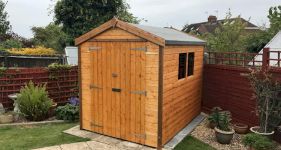Garden Office Cost
- The average cost of a garden office is around £12,000 in 2026.
- It typically takes around 1 week to build a garden office.
- A breakdown of how much different types of garden offices cost, as well as what impacts the garden office prices you're quoted.
- Details about planning permission and building regulations in the UK for garden offices or pods.
- How to find and hire a local garden office builder.
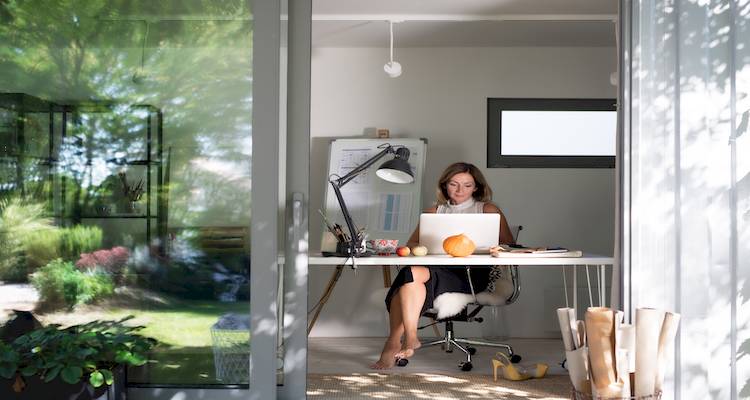
£12,000
Table of Contents
- How Much Does It Cost To Build a Garden Office?
- Cost of Garden Office Building Materials
- Additional Garden Office Costs
- How Much Do Garden Office Builders Cost?
- Factors That Impact Garden Office Costs
- What's Involved in Building a Garden Office?
- Can I Build a Garden Office Myself?
- Building Regulations and Planning Permission for a Garden Office
- Types of Garden Office
- Checklist: Hiring a Garden Office Builder in the UK
- FAQs
- Sources
How Much Does It Cost To Build a Garden Office?
According to recent research, 28% of UK workers are now working from home for at least part of the week.
Because of this, garden offices have become more and more popular — providing homeowners with a dedicated space to get work done.
Typically, this type of outbuilding costs less than extending your home or converting existing spaces like a garage, loft, or basement.
A purpose-built office can be obtained in two ways:
- You can order buildings based on a predefined blueprint and have the components supplied and ready to assemble.
- You can hire an architect to design your building, bespoke for your space, with a construction team sourcing the materials for you.
The second option will increase the cost of your garden office, but you can tailor it to your exact needs.
A brick garden office will cost between £24,500 and £27,000. If you have the external space and are willing to go through requesting planning permission, this could be a viable option.
Your role is to specify what and how you want it and ensure that your designer or construction crew can meet those requirements. The advantage of this is that it could be designed to meet standards for a future change of use, but converting it to a self-contained living space would require full planning permission and be subject to building regulations.
As a result, depending on the overall quality of the construction and bespoke amenities, a small garden office pod can cost between £5,500 and £21,500, while a medium to a large garden office can cost between £13,000 and £22,000.
If you get a quote from a contractor, remember to factor in the cost of any foundations that will be required and the cost of plumbing and drainage for a shower or toilet, if one is included. A toilet will typically cost between £1,100 and £2,200, while a shower room can cost £3,300.
We've installed a garden office and need reliable internet. Is it possible to extend our home Wi-Fi to the office, or would we need a separate network? We have power, but no stable internet connection yet. What's the best solution?
The cost of a garden room varies based on the materials used or the features included. For example, many brands offer construction and painting services, which are usually extra.
In London, the cost of a full and installed garden room ranges between £15,000 and £16,000, while in the north of the UK, the cost ranges between £12,000 and £16,000, depending on the design and materials required.
Garden Office Prices
| Garden Office Description | Total Average Cost |
|---|---|
| Entry-level pre-fab garden office | £1,100 - £2,200 |
| Purpose-built garden office | £9,800 – £11,000 |
| Brick garden office | £24,500 – £27,000 |
| Small garden office | £5,500 – £21,500 |
| Medium garden office | £13,000 – £22,000 |
| Add toilet to garden office | £1,100 – £2,200 |
| Add shower room to garden office | £3,300 |
Cost of Garden Office Building Materials
Now, let's take a look at supply costs.
Depending on the building company you choose, laying the groundwork may be included in the overall cost of the garden room. However, in some cases, you may need to hire groundworkers and landscapers separately to prepare the plot ahead of time.
In most cases, garden offices do not require the same foundations as a house. The most common procedure is to prepare a concrete slab base.
A small concrete slab base of around 2m by 2m will cost between £1,650 and £1,980, depending on ground conditions and easy accessibility, with garden office prices increasing as the size grows.
What is the minimum recommended depth for composite cladding on a garden office? My builder originally planned for 35mm, but now suggests 10mm as an alternative due to stock issues. Should I be concerned about durability and sturdiness?
Another common option is to use ground screws which are dug into the dirt to the desired depth, and then used as a base for the room's frame.
These are particularly useful where the ground is not flat and have a lower long-term effect than a concrete foundation.
A ground screw system can cost between £2,200 and £2,750, depending on the device's size being built.
Additional Garden Office Costs
If you want a luxurious garden office, you must be ready for the cost of your garden office to rise.
Here are the additional garden office costs you need to be aware of when putting together your project's budget:
Floor Insulation Cost
Suspended floors have a void underneath and are built on floor joists. These materials are excellent candidates for retrofitting floor insulation, and numerous options are available, including glass mineral wool, sheep wool, PIR board, and loose-fill insulation.
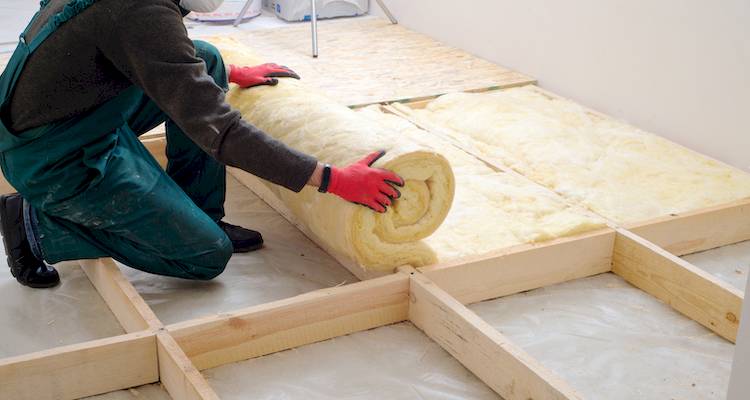
Insulation is installed either above or below the concrete during construction. Insulation must be installed above the concrete floor to retrofit it.
On average, floor insulation costs around £300 for a 10m² room. However, the prices you're quoted to do this when originally building the garden office will likely be lower.
Here are the typical floor insulation options and their costs:
- PIR (polyisocyanurate) board - A popular rigid insulation board, typically supplied in 1.2 metres by 2.4-metre sheets that can be cut to size. Depending on thickness and rating, PIR insulation costs £22 to £66 per sheet.
- Glass mineral fibre - Suitable for use on concrete floors, with a roll covering about 6m², costing £28 to £33 per roll.
- Polystyrene sheets - Simple to handle and install beneath or above concrete, offering excellent thermal resistance. Available as extruded or expanded polystyrene, with 2.4 metres by 1.2-metre sheets costing around £16.50 per m².
- Sheep wool floor insulation - This is a natural material, treated to ensure its durability, costing between £20 and £27.50 per m².
- Loose-fill floor insulation - This comes in different forms, such as mineral wool or expanded polystyrene, and costs around £1.50 per kilogram.
Underfloor Heating Cost
If you're adding an ensuite to your office space, consider installing underfloor heating.
Installing this during the construction phase will be less expensive than doing it in the future.
On average, underfloor heating costs around £880 to install in a single room.
However, the prices you're quoted will depend on the type of underfloor heating system you're using and the size of the room.
Cost of Doors and Windows
When choosing your garden room, the doors and windows you use will usually be an option, ranging from less costly uPVC frames to more expensive hardwoods.
Timber garden offices tend to be the most aesthetically pleasing option.
However, you may want to make your garden room's doors or windows a focal point, allowing you to take advantage of the outdoor space and natural light.
Wall-to-ceiling windows that take up the entire side of the room and bi-fold doors that open an entire side of the room and let the outside in are popular. However, these can significantly increase the overall cost of a garden office.
For instance, bifold doors cost around £3,300 to buy and install.
In contrast, the typical cost of patio doors (with installation) is £680 in the UK.
Cost of Painting a Room
Painting a room is a simple task for any painter or decorator, and any DIY enthusiast can do it.
But how much does it cost to hire a professional to handle this for you?
The cost of painting a room is mainly determined by the size of the room that you want to have decorated, as well as the ease of access.

A standard 4m by 3m room would take a couple of days to paint completely, including woodwork and coving.
Outside of London, most decorators charge around £165 to £220 per day, so your total labour cost would be around £330 to £440. Adding another £55 for the paint, results in a total cost of £385 to £495.
Architect Cost
Not all builders will require architect plans to build a garden office.
However, getting plans drawn up by a qualified architect keeps everyone on the same page — which will make it easier for you to get exactly what you want.
Architect fees for a basic set of plans will typically cost around £440. For more detailed plans that outline the full scope of the work, you should expect to pay up to £1,650.
Given the project's cost, this isn't a large sum, but it can significantly improve your project's outcome. Another advantage of hiring an architect to create detailed plans is that you will be less likely to change your mind later, saving you money in the long run.
How Much Do Garden Office Builders Cost?
The number of people working on the project, the length of the job, the ease of access, the condition of the workspace, and your location in the UK are all common factors that influence labour costs.
Let's take a look at garden office labour costs and timescales:
- The average labour cost per worker is between £185 and £210 per day.
- For a typical team of 2 to 4 workers, the total labour cost will be £300 to £360 per day.
- More complex garden office builds can rise to £1,100 per day in labour costs.
- Building a small to medium-sized modular garden office design takes about 2 days.
- Most large garden office building projects take between 7 and 10 days to complete on-site.
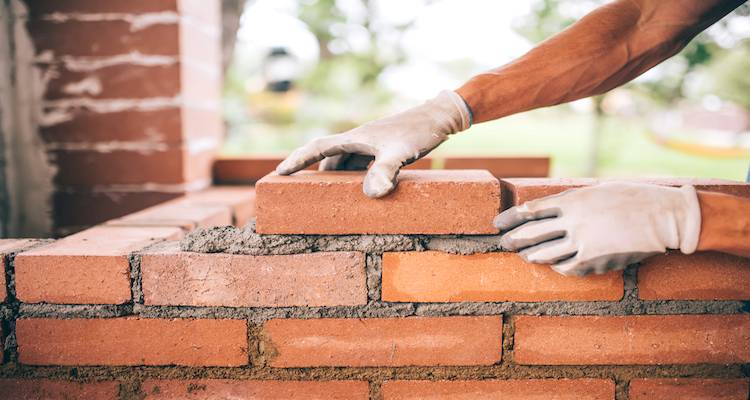
On-site construction teams are typically made up of 2 to 4 people. The size and complexity of the structure determines the number.
Other team members, including electricians and plasterers, may join during the construction phase if additional skills and experience are required.
I currently have a garden shed with full power, with the garden circuit being a separate circuit on the main consumer unit. I'm planning on replacing the shed with a proper garden room. Is it possible to utilise the current electricity connection in the new garden room?
After that, the electrician can come back and alter the supply to your requirements. If it's a couple of sockets and a light, 16/20A is able, and by the sounds of it, you will have the required cable size."
Factors That Impact Garden Office Costs
Let's go through the different cost factors that affect the overall cost of your garden office.
Location in the UK
Your garden room price will rise if your property's location is difficult to reach.
As a result, properties in rural locations will cost more than those in more easily accessible areas of the UK.
Labour costs in London and the surrounding areas are often more than those seen in the north of the UK due to the higher cost of living.
Size of the Garden Room
The larger the garden room, the more expensive it will be.
Shape of the Garden Room
Garden rooms with unusual shapes tend to be more expensive. Walls that are not joined at right angles raise the cost as well.
Other features, such as including a walkway or pergola, can also raise the price of a garden room.
Planning Permission
There will be an application fee of around £170 if you need to apply for planning permission to construct your garden room.
Normally, your supplier will include drawings in the project cost, and a small fee could be charged for the drawings and specifications. However, if building control approval is required, there may be additional fees to pay.
Delivery Fees
Most garden room companies are selling their structures on a national scale, meaning they'll deliver the parts to you.
However, if you're trying to purchase a garden room from a company that's not local to you, make sure you check to see if there's an added delivery fee.
The "standard" delivery radius is usually 100 miles. Anything over that is usually charged by the mile, with prices as high as £6 per mile not uncommon.
What's Involved in Building a Garden Office?
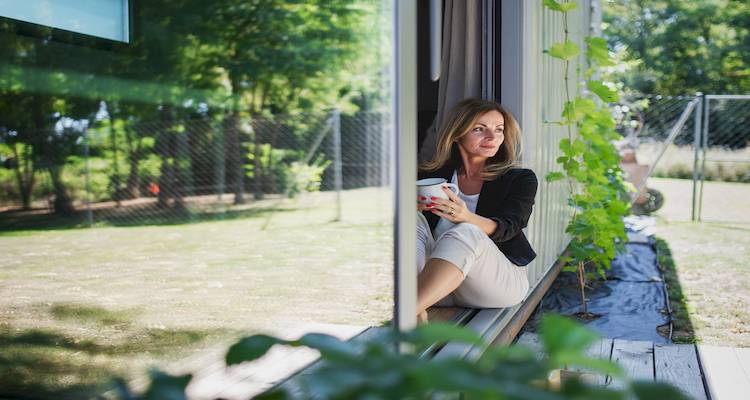
Building a garden office isn’t something most people could DIY. It involves groundwork, carpentry, electrics and compliance, and the work is physically demanding from start to finish.
Due to this not being a job you can typically do yourself, most homeowners choose to hire a local builder.
With MyJobQuote, you can get free quotes from builders near you, with zero obligation to go ahead.
Here is the typical process for having a garden office built:
Before the Job Starts
- Site Setup — Set out the location and orientation of the office, do any groundwork or build an appropriate support frame if needed, mark anything that needs to be avoided or removed such as trees, underground pipes or electrical wiring, and allow a suitable maintenance access gap all round. Aim for roughly 50cm where possible, and plan the approach to the front door if a lawn would mean dragging dirt and mud around in the winter months.
- Planning the Power and Cabling — Plan the power run with a certified electrician, install your electrics, and connect the office to the house with an armoured cable. It will have to be dug underground or installed along a fence, which can take a long time.
During the Job
- Base is Installed — The builder sets out and installs either plinth supports, which are less expensive and provide relatively improved water drainage but create a void that can allow vermin to nest or cold air to circulate reducing thermal efficiency, or a solid foundation that provides the most stable and long lasting support. Concrete construction provides a level and durable foundation on which to build.
- Walls are Built and Insulation Installed — They will then erect the wall structure and fit the insulation. An office without insulation can be extremely cold in the winter, so this should be considered carefully.
- Exterior Cladding is Fitted — Your builder will install the cladding you choose on the exterior walls. Most options provide adequate weather protection, so the finish comes down to aesthetic preference.
- Roof is Constructed and Overhang Set — Next, the builder forms the roof you have chosen. A flat roof is the most basic structure and uses only one side of guttering. An apex or dual pitched roof can be built with the rooftops running longways, as on a flat roof, or upwards to the apex as in the original design. The overhang is set to the size you want, and a substantial overhang provides more rain protection than a small overhang.
After the Job
- Completion — You'll need to wait about a week in dry weather for the structure to be finished. You'll also need another two weeks to complete any interior and visual style touches.
Can I Build a Garden Office Myself?
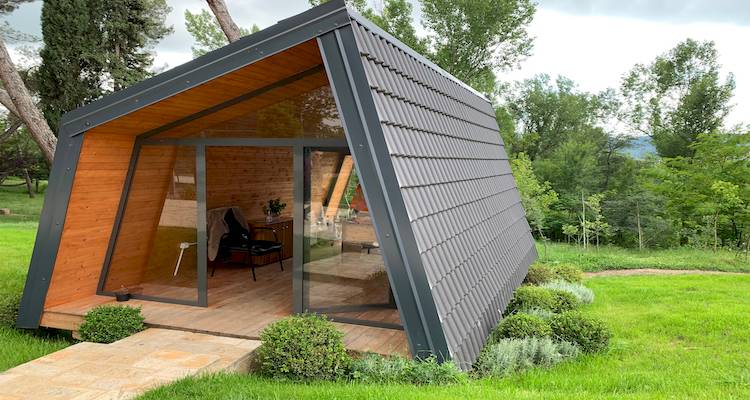
It is possible to construct your own garden office if you want a simple design, though for a well-insulated, year-round office most homeowners use a builder.
You could build your garden office from scratch or purchase a kit. Many garden office suppliers sell designs as kits that you can assemble yourself, and what’s included varies by supplier.
Types of garden office kits
- Log cabin style — A building of interconnecting timbers that is relatively quick and easy to build. You get a large building for a relatively small budget, but this style is not similar to other styles of garden office when it comes to thermal efficiency because it is not as well insulated and is often not even double glazed.
- Framework-only kits — Kits that include the basic framework. You source materials and finish the interiors and exteriors of the garden office. This is a good option because you get a sturdy structure designed by professionals while also having the freedom to personalise the structure.
- Total package kits — Kits that include everything you need to build and finish a garden office from the supplier, including the cladding, doors and windows, and interior finish.
It is worth noting that the complete kits do not include the foundation system because it is site-specific.
Building Regulations and Planning Permission for a Garden Office
Planning Permission
There are regulations in place that help stop you from constructing a structure that may impact your neighbours, so always check the UK planning portal before you begin.
Failure to follow these rules may result in the removal of your garden office. You should also check your property deeds, as there may be a covenant that prohibits building work in certain areas.
If unsure, you can double-check these restrictions with your local planning department and obtain relevant guidance.
The following is a summary of restrictions for permitted development outbuildings:
- Outbuildings to the side of the property are not permitted development on designated land.
- Outbuildings are not permitted development within a listed building's grounds.
- Outbuildings are not authorised for development beyond the original house's main elevation.
- The term "original house" refers to the house as it stood on July 1, 1948 (if it was built before that date).
Outbuildings must not take up more than 50% of the total land area surrounding the original house. Sheds, outbuildings, and extensions to the original house must be considered when calculating the 50 per cent limit. When coming up with garden office ideas, many people choose to use their existing outbuildings for this reason, such as a garden office shed or a garden office outbuilding.
Any new building must not be a separate, self-contained residence to come under permitted development. Outbuildings must be single-story, with eaves height of 2.5 metres and an overall height of 4 metres if they have a dual-pitched roof, or 3 metres otherwise.
If the outbuilding is inside 2 metres of the property line, the structure's total height should not exceed 2.5 metres. In addition, to be permitted development in national parks, the Broads, Areas of Outstanding Natural Beauty and World Heritage Sites, the total area covered by any outbuildings more than 20 metres from any wall of the house must not take more than 10 square metres.
Building Regulations
Most small, detached garden rooms used for incidental purposes are exempt from a full Building Regulations application. As a rule of thumb, a single-storey outbuilding under 15 m² with no sleeping is usually exempt. Between 15 m² and 30 m² can also be exempt if it’s at least 1 metre from the boundary or built largely from non-combustible materials.
You’ll need full Building Regulations if any of the following apply:
- The room includes sleeping accommodation.
- The floor area is over 30 m².
- It’s attached to your house.
- It doesn’t meet the exemption conditions above.
Regardless of exemptions, certain work must always meet regulations. That includes electrical installations (use a certified electrician), any toilet or drainage connection, and sensible fire safety where a building sits close to a boundary.
I have a 5x5 metre space up to the boundary fences and want to build a garden office that could also serve as a temporary living space (like a studio apartment with kitchen, bathroom, and sleeping areas). Where should I start? Will I need planning permission or architectural services? Any advice?
Types of Garden Office
To help you decide which garden office is right for you, let's go over the main materials you can choose from:
Softwood Treated Garden Offices
The entry-level timber cladding used on garden offices is fast-growing pine cladding, which is a honey colour in its natural state. It's simple to work with and can be used for various cladding profiles.
In its natural state, it's not a long-lasting cladding, so pine cladding necessitates UV protection and resistance to rot, insect, and fungal attack. Softwood decking is readily available, making it less costly than traditional timber decking.

Pros
- ✔ Affordable, and readily available
- ✔ Easy to work with
- ✔ Customisable with stains and paint
Cons
- ✖ Not as long-lasting as hardwood
- ✖ Will need regular maintenance to prevent water damage
- ✖ Shorter lifespan will need to be replaced within a few years
Thermowood Garden Office
Thermowood is roasted to extremely high temperatures, which preserves it. Because of this, garden offices clad in this material are usually left unfinished.
Pros
- ✔ Heat-treated wood to give good resistance to the elements
- ✔ Long-lasting, durable material
- ✔ Has natural resistance to pests
Cons
- ✖ Will change colour over the years as the timber weathers
- ✖ More expensive than softwood materials
- ✖ While hardwearing, it's not as durable as hardwood can be
Cedar Garden Office
Western red cedar is a common choice for garden office cladding because it's a durable wood with natural insect and fungus resistance.
Pros
- ✔ Easy to maintain the wood's natural redness
- ✔ Naturally resistant to pests and external elements
- ✔ Little maintenance needed over the years
Cons
- ✖ Cedar wood costs more than softwood
- ✖ The wood's colour will fade over time
- ✖ Fairly susceptible to dents
Siberian Larch Garden Offices
Siberian larch's inherent resilience makes it an excellent choice for garden office cladding. This is partly related to the resin in the wood, which makes it resistant to rot and fungus attack.
Pros
- ✔ Resistance to rot and fungus
- ✔ Durable wood with resilience to the elements
- ✔ Aesthetically pleasing, with a high-end finish
Cons
- ✖ Can be tricky to work with and install
- ✖ May crack over time
- ✖ An expensive timber choice
MDF Garden Office (Exterior Grade)
MDF is a popular cladding material because it's available in large sheets with few joints. Although unfinished outer grade MDF has a greenish tint, its polishing is perfect for painting.
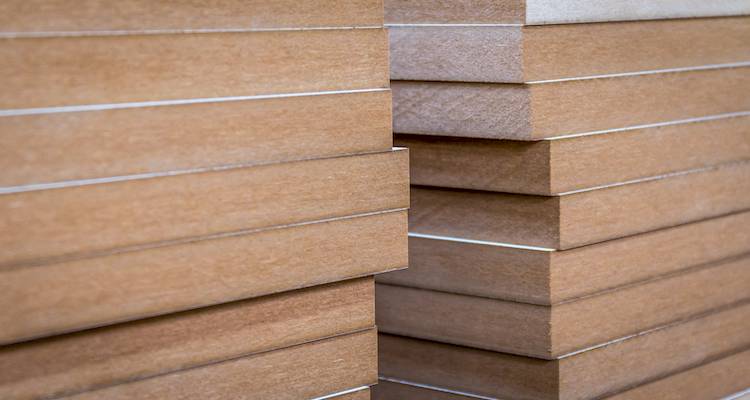
Pros
- ✔ Easy to install
- ✔ Readily available, and low-cost
- ✔ Smooth finish, ideal for painting and staining
Cons
- ✖ Not as durable as natural timber
- ✖ Can look cheap compared to other options
- ✖ Quick to deteriorate if not properly treated
Checklist: Hiring a Garden Office Builder in the UK
When hiring a contractor for a garden office, you need to make sure you're making an informed choice and finding a reliable builder.
Here are some things to look for to help you decide:
- Start by gathering at least 3 quotes from different builders using MyJobQuote to compare the prices of local traders.
- Ask for quotes in an itemised, written format to avoid any nasty surprises when settling the bill.
- Be sure to ask about any hidden costs - do you need to pay for skip hire, waste removal, and is VAT added?
- Take a look at their past projects to get an idea of their standard and quality of work.
- Where possible, read their customer reviews, paying close attention to any remarks on their work ethic, timekeeping, and tidiness on site.
- Remember to ask about any warranties or guarantees on the garden office itself or the builder's labour if you need anything repaired soon after the build is complete.
FAQs
How Do You Get WiFi in a Garden Office?
Do I Need To Tell My Home Insurer About a Garden Office?
Will I Pay Business Rates or Council Tax for a Garden Office?
Is a Garden Office an Asset?
Can My Limited Company Pay for a Garden Office?
Sources
https://www.ons.gov.uk/employmentandlabourmarket/peopleinwork/employmentandemployeetypes/articles/whoarethehybridworkers/2024-11-11
https://www.statista.com/statistics/1207746/coronavirus-working-location-trends-britain/
https://www.planningportal.co.uk/permission/common-projects/working-from-home/adding-an-outbuilding-as-a-garden-office
https://www.ukgardenbuildings.co.uk/articles/how-to-build-your-own-garden-office/
https://aroominthegarden.co.uk/20-amazing-garden-office-ideas-to-inspire-you/





